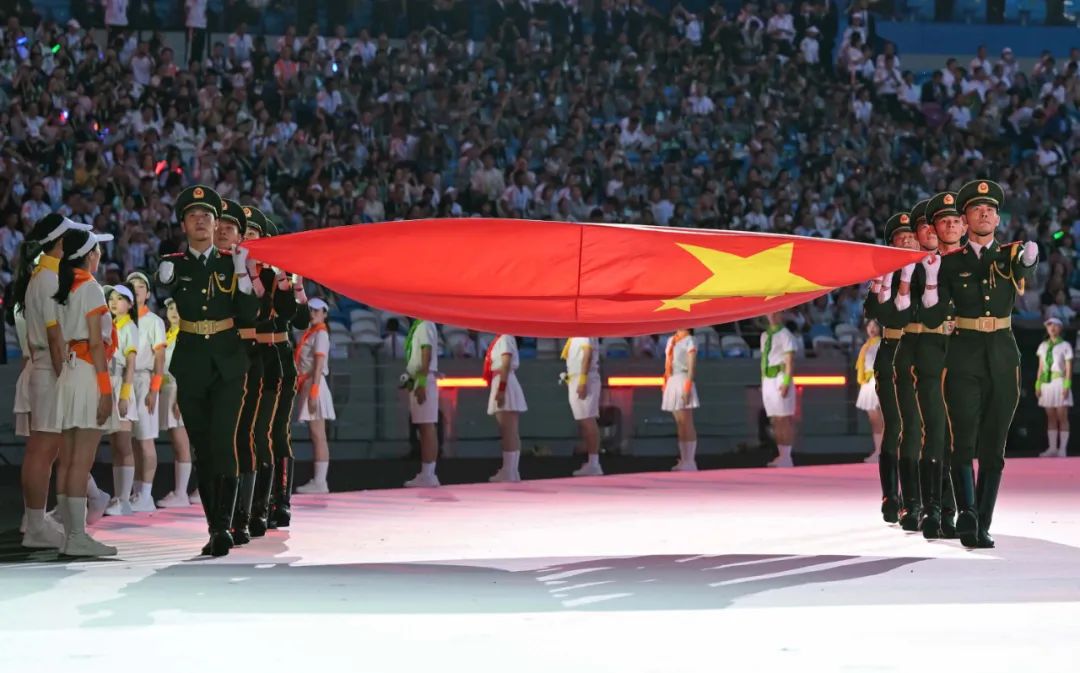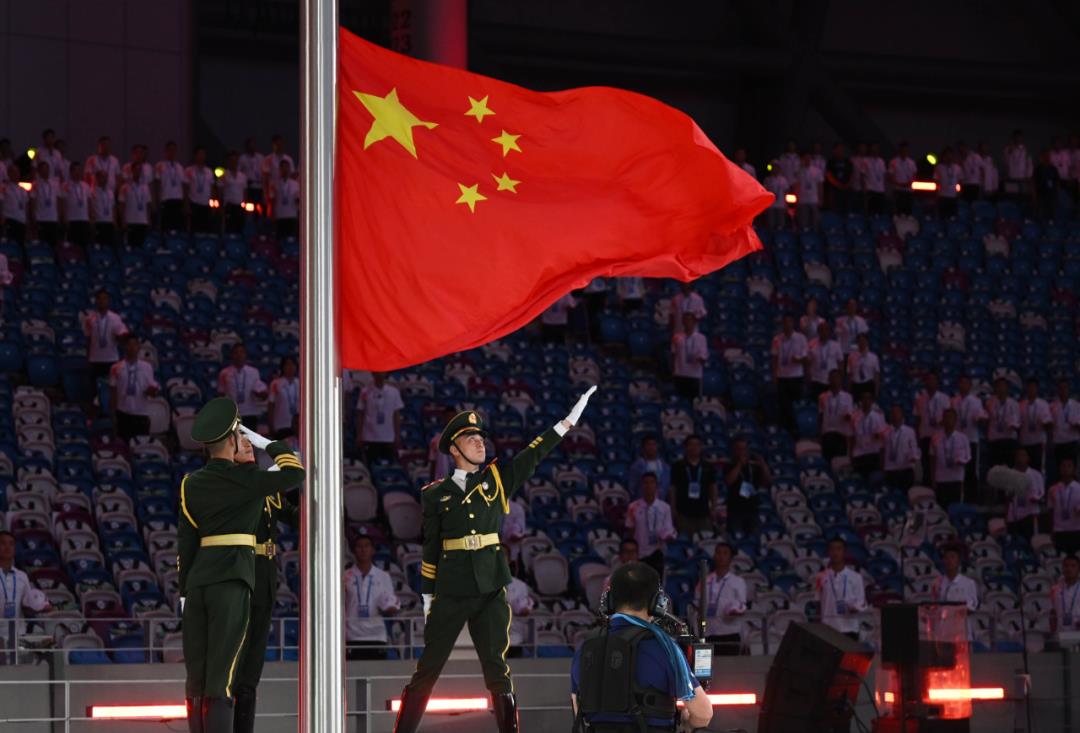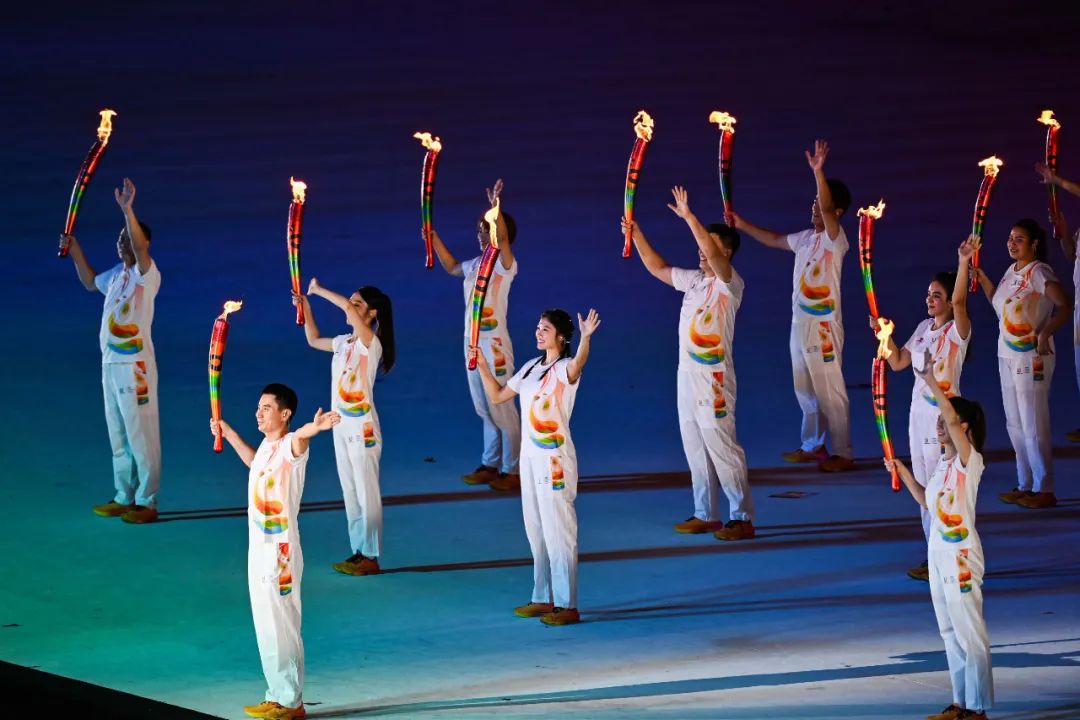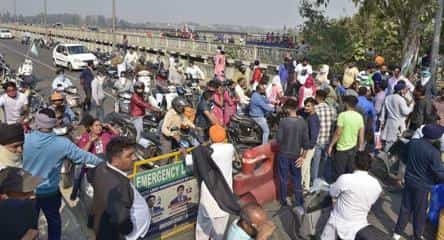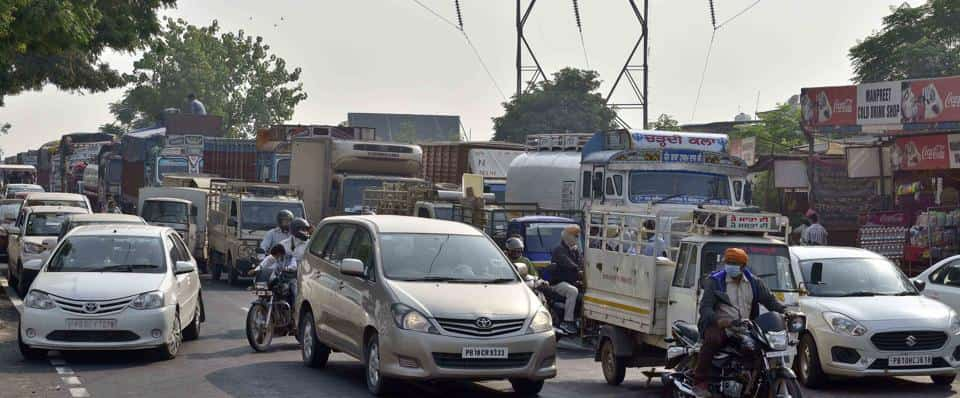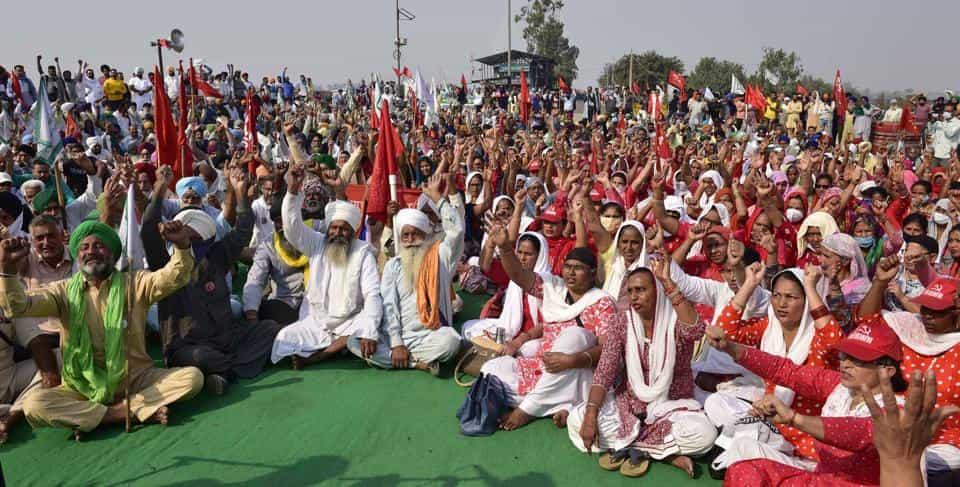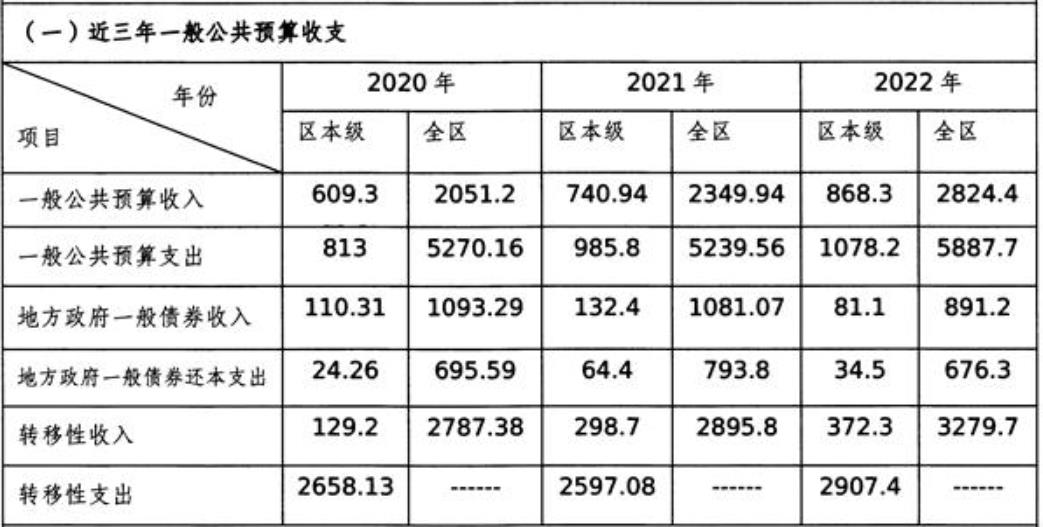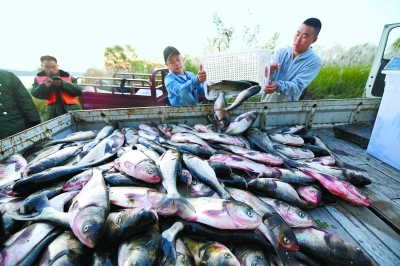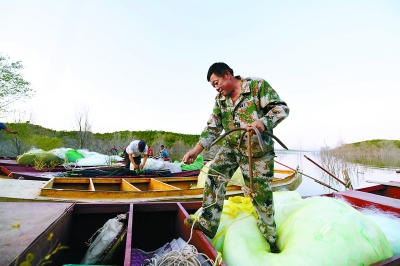County earthquake relief headquarters (including Guangyuan Economic and Technological Development Zone Administrative Committee), members of the municipal earthquake relief headquarters:
《Guangyuan earthquake emergency plan (2020 edition)"has been the seventh session of the Municipal People’s government.94 executive meetingsDeliberating and adopting, is issued to you, please actual, carefully organize the implementation.201fiveyeartwelvemooneightIssued on the 20 thThe Guangyuan earthquake emergency plan(Revised in 2015) (Guangfu Ban Fa [2015] No.70)Abolish at the same time.
Guangyuan earthquake relief headquarters
July 1, 2020
Guangyuan earthquake emergency plan (2020 edition)
Guangyuan earthquake relief headquarters
the year of 2020sevenmoononesun
eye record
1. General principles 1
1.1 Compilation Purpose 1
1.2 Compilation Basis 1
1.3 Scope of application 1
1.4 Working Principle 1
1.4.1 People-oriented, prevention first 1
1.4.2 graded responsibility and territorial priority 1
1.4.3 Scientific judgment and efficient response 2
1.4.4 Department Linkage and Social Participation 2
2. Organization and command system and responsibilities 2
2.1 City Earthquake Relief Headquarters 2
2.2 City Earthquake Relief Headquarters Composition 2
2.3 City Earthquake Relief Headquarters Office 3
2.4 City Earthquake Relief Headquarters Working Group 3
2.4.1 Comprehensive Coordination Team 3
2.4.2 Technical Support Team 4
2.4.3 Emergency Rescue Team 4
2.4.4 Mass Resettlement Group 5
2.4.5 Medical and Epidemic Prevention Section 6
2.4.6 Transport Section 6
2.4.7 Infrastructure Support Group 7
2.4.8 Public Security Stability Group 7
2.4.9 Disaster Relief Donation Receiving Group 8
2.4.10 Publicity Group 8
2.4.11 Disaster Assessment Team 9
2.4.12 Foreign Affairs Coordination Group 9
2.4.13 Recovery and reconstruction group 9
3. Response mechanism 10
3.1 Earthquake Disaster Event Classification 10
3.1.1 Extraordinary major earthquake disaster events 10
3.1.2 Major earthquake disaster events 10
3.1.3 Major earthquake disaster events 10
3.1.4 General earthquake disaster events 11
3.2 Hierarchical Partition Response 11
3.2.1 Emergency Response to Extraordinary and Major Earthquake Disasters 12
3.2.2 Emergency Response to Major Earthquake Disasters 12
3.2.3 Emergency Response to General Earthquake Disasters 12
3.3 Pre-disposal 12
4. Emergency start-up 13
4.1 First-level response 13
4.1.1 Execution Response 13
4.1.2 Command and Deployment 13
4.1.3 Emergency Measures 15
4.2 Secondary Response 18
4.2.1 Execution Response 18
4.2.2 Command and Deployment 19
4.2.3 Emergency Measures 20
4.3 Major earthquake disaster events 20
4.3.1 Start the three-level response 20
4.3.2 Command and Deployment 20
4.3.3 Emergency Measures 21
4.4 Level 4 Response 21
4.4.1 Start response 21
4.4.2 Command and Deployment 21
4.4.3 Emergency Measures 22
5. End of emergency 22
6. Restoration and reconstruction 22
6.1 Recovery and Reconstruction Planning 22
6.2 Restoration and reconstruction implementation 23
7. Emergency response to other earthquake events 23
7.1 Response to impending earthquake emergency events 23
7.2 Response to Strong Sense Earthquake Events 24
7.3 Response to the earthquake rumors Incident 25
7.4 Response to the earthquake-affected events 25
7.4.1 Organization and leadership of earthquake-affected events 25
7.4.2 Emergency measures for earthquake-affected events 26
8. Emergency support 26
8.1 Construction of emergency organization and command system 26
8.2 Construction of emergency command technical system 26
8.3 Construction of emergency rescue team system 27
8.4 Construction of disaster relief fund guarantee system 27
8.5 Construction of Relief Material Guarantee System 28
8.6 Construction of Earthquake Risk Assessment System 28
9. Plan management 29
9.1 Plan preparation 29
9.2 Plan drill 29
9.3 Plan Evaluation and Revision 30
10 supplementary provisions 30
10.1 Responsibility and Reward and Punishment 30
10.2 supervision and inspection 30
10.3 Connection between Guangyuan Economic and Technological Development Zone and this Emergency Plan 31
10.4 Interpretation of Terminology 31
10.5 Plan Interpretation 31
10.6 Plan Implementation Time 31
In order to thoroughly implement the General Secretary of the Supreme LeaderThe spirit of important instructions on emergency management and disaster prevention, mitigation and relief work series, the implementation of provincial and municipal earthquake prevention and disaster relief work requirements, improve the mechanism of earthquake prevention and disaster reduction, improve the ability of earthquake emergency response, and safeguard people’s lives and property safety and social stability.
According to People’s Republic of China (PRC) Emergency Response Law, People’s Republic of China (PRC) Earthquake Disaster Mitigation Law, Sichuan Earthquake Disaster Mitigation Regulations, Sichuan Earthquake Emergency Plan, Guangyuan General Emergency Plan, Notice of Guangyuan Municipal People’s Government on Adjusting and Perfecting Guangyuan Emergency Committee and other laws, regulations and provisions.
This plan is applicable to the emergency response, emergency rescue, recovery and reconstruction and the construction of emergency guarantee system in the administrative area of our city to deal with sudden earthquake disasters.
Adhere to the people-centered thinking and actively carry out earthquake risk prevention work., timely control and eliminate hidden dangers, reduce the risk of earthquake disasters, improve emergency response capabilities, and minimize casualties and property losses caused by sudden earthquakes.
Under the unified leadership of the municipal party Committee and the municipal government, to build a unified command, both professional and regular, responsive, up and down linkage of earthquake relief command system. Adhere to the principle of graded responsibility and territoriality, and the municipal, county (district) and township (street) party committees and governments shall organize and implement earthquake relief work within their respective administrative areas according to law.
Strengthen earthquake monitoring and early warning., timely and accurately grasp the changes of earthquake trends in the region, actively prepare for earthquake disasters, organize regular training and drills, and improve the scientific and targeted emergency response.
Give full play to the overall coordination role of the municipal earthquake relief headquarters., strengthen the cooperation of municipal departments, actively mobilize all sectors of society, and guide the public to participate in earthquake relief work.
City earthquake relief headquarters is a special headquarters under the Municipal Emergency Committee., under the leadership of the municipal party committee, the municipal government and the municipal emergency committee, responsible for the unified organization, command and coordination of the city’s earthquake emergency work.
point to wave Chief: Deputy Mayor in charge of emergency work.
Executive Deputy Commander: the deputy mayor who assists in emergency work.
Deputy Commander: Deputy Commander of Guangyuan Military Division, Deputy Secretary General of Municipal Government Liaison, Director of Municipal Emergency Management Bureau, Director of Municipal Development and Reform Commission, Director of Municipal Economic and Information Technology Bureau, and Executive Deputy Director of Municipal Public Security Bureau.
City earthquake relief headquarters is located in the city emergency management bureau. Address: Section 1 of Lizhou East Road438.
Members of the Municipal Earthquake Relief Headquarters: Propaganda Department of the Municipal Party Committee (Information Office of the Municipal Government),Guangyuan Military Division, Municipal Development and Reform Commission, Municipal Economic and Information Bureau, Municipal Education Bureau, Municipal Science and Technology Bureau, Municipal Public Security Bureau, Civil Affairs Bureau, Municipal Judicial Bureau, Municipal Finance Bureau, Municipal Natural Resources Bureau, Municipal Ecological Environment Bureau, Municipal Housing and Urban-Rural Development Bureau, Municipal Transportation Bureau, Municipal Water Conservancy Bureau, Municipal Agriculture and Rural Bureau, Municipal Bureau of Commerce, Municipal Bureau of Culture, Radio, Film and Television, Municipal Health Commission, Municipal Emergency Management Bureau, Municipal Statistics Bureau, Municipal State-owned Assets Supervision and Administration Commission, Municipal Water Resources Bureau. Municipal Civil Defense Office, Municipal Economic Cooperation Bureau, Municipal Forestry Bureau, Municipal Urban Management and Law Enforcement Bureau, Municipal Natural Gas Comprehensive Utilization Industrial Park Management Committee, Communist Youth League Committee, Municipal Red Cross Society, Municipal Meteorological Bureau, Municipal Foreign Affairs Office, Municipal Network Information Center, Guangyuan Banking Supervision Branch, Armed Police Guangyuan Detachment, Municipal Fire Rescue Detachment, State Grid Guangyuan Power Supply Company, Chengdu Railway Guangyuan Locomotive Depot, Mobile Guangyuan Branch, Telecom Guangyuan Branch, China Unicom Guangyuan Branch, Tower Guangyuan Branch, etc.
City earthquake relief headquarters can increase or decrease the working group or adjust the member units according to the actual needs of earthquake relief.
City earthquake relief headquarters office is located in the city emergency management bureau.To undertake the daily work of the headquarters, implement the decision-making arrangements of the municipal party committee, the municipal government, the municipal emergency committee and the municipal earthquake relief headquarters, and organize, coordinate, guide and supervise the city’s earthquake prevention and disaster reduction and earthquake emergency response work.The director of the office is concurrently the director of the Municipal Emergency Management Bureau.
City earthquake relief headquarters according to the needs of earthquake emergency response work, under 13 working groups, the working group is composed of the relevant member units of the headquarters, and the leader is the responsible comrade of the lead unit. Among them:
Led by the Municipal Emergency Management Bureau, Municipal Development and Reform Commission, Municipal Bureau of Economy and Information Technology, Municipal Public Security Bureau, Municipal Finance Bureau, Municipal Transportation Bureau, Municipal Health and Wellness Commission, Municipal Bureau of Statistics, Municipal Office Affairs Service Center, Municipal Earthquake Prevention and Disaster Reduction Service Center, Guangyuan Military Division and People’s Government in the disaster area.
major duty: To undertake the office work of the headquarters in emergency, and assist the commander and deputy commander in organizing and implementing earthquake relief operations. Responsible for collecting and summarizing information such as earthquake situation, disaster situation, social situation and the progress of earthquake relief work; To undertake meetings, activities and messages of the municipal earthquake relief headquarters; Responsible for the city’s comprehensive coordination of earthquake relief work, responsible for the coordination between the working groups of the headquarters; Responsible for the logistics support of the headquarters. Complete other tasks assigned by the headquarters.
Led by the Municipal Emergency Management Bureau, Municipal Science and Technology Bureau, Municipal Natural Resources Bureau, Municipal Ecological Environment Bureau, Municipal Housing and Urban-Rural Development Bureau, Municipal Transportation Bureau, Municipal Agriculture and Rural Affairs Bureau, Municipal Water Conservancy Bureau, Municipal Forestry Bureau, Municipal Meteorological Bureau, Municipal Earthquake Prevention and Disaster Reduction Service Center and the people’s government in disaster areas.
major duty: Responsible for disaster monitoring and judgment. Responsible for quick report of earthquake situation, intensity, aftershock monitoring, trend judgment and early warning; Carry out post-earthquake emergency surveying and mapping data support work; Carry out meteorological monitoring in disaster areas and do a good job in meteorological early warning in disaster areas; To carry out monitoring and prevention of air, water and soil pollution in disaster areas; Organize and coordinate experts to provide necessary technical support and guidance. Responsible for the coordination of relevant professional and technical teams inside and outside the city. Complete other tasks assigned by the headquarters.
Led by the Municipal Emergency Management Bureau, Municipal Bureau of Natural Resources, Municipal Housing and Urban-Rural Development Bureau, Municipal Transportation Bureau, Municipal Bureau of Ecology and Environment, Municipal Water Conservancy Bureau, Municipal Health and Wellness Commission, Municipal Forestry Bureau, Guangyuan Military Division, Municipal Fire Rescue Detachment, Communist Youth League Committee, State Grid Guangyuan Power Supply Company and the people’s government in the disaster area.
major dutyResponsible for personnel search and rescue and disaster rescue. Formulate emergency rescue action plans and organize rescue teams and forces from all sides to carry out personnel search and rescue; To be responsible for conducting emergency investigation and emergency monitoring on fires, geological disasters, collapse and landslide in mining areas, leakage of dangerous chemicals, mountain torrents and forest and grassland fires caused by earthquakes, and organizing danger removal and emergency rescue; Guide disaster-stricken areas to organize self-help and mutual rescue work, and coordinate the organization, dispatch and management of social emergency rescue forces and volunteer teams; Organize the call and requisition of emergency rescue equipment, equipment and materials, and assist in the logistics support of various emergency rescue forces; Responsible for the coordination of rescue teams inside and outside the city, inside and outside the country (territory); Organize all kinds of rescue forces to support local post-disaster recovery and reconstruction. Complete other tasks assigned by the headquarters.
Led by the Municipal Emergency Management Bureau, Municipal Development and Reform Commission, Municipal Bureau of Economic and Information Technology, Municipal Education Bureau, Civil Affairs Bureau, Municipal Audit Bureau, Municipal Bureau of Justice, Municipal Finance Bureau, Municipal Bureau of Natural Resources, Municipal Housing and Urban-Rural Development Bureau, Municipal Bureau of Agriculture and Rural Affairs, and municipal governmentBureau of Commerce, Municipal Bureau of Culture, Tourism, Radio and Television, Municipal Market Supervision Bureau, Municipal Bureau of Veterans Affairs,City Urban Management Law Enforcement Bureau,Municipal Bureau of Poverty Alleviation and Development, Municipal Civil Defense Office, Guangyuan Banking Insurance Supervision Branch, Municipal Financial Services Center and the people’s government in the disaster area, etc..
major duty: to guide the development of housing safety appraisal and danger elimination in disaster areas; Responsible for the emergency relocation and basic living security of the affected people in the disaster area. Formulate and implement work plans for the relocation and resettlement of the affected people, post-disaster relief and financial and material support; Organize evacuation, transfer and temporary resettlement of the affected people; Responsible for the aftermath of the victims; Ensure the supply of daily necessities needed for disaster relief; Activate emergency shelters or set up temporary shelters, organize, guide and supervise the allocation and use of central and provincial disaster relief funds and materials; Organize, coordinate and guide financial institutions to do a good job in insurance survey, loss determination and claim settlement. Complete other tasks assigned by the headquarters.
Led by the Municipal Health and Wellness Commission., the Municipal Development and Reform Commission, the Municipal Bureau of Economy and Information Technology, the Municipal Bureau of Agriculture and Rural Affairs, the Municipal Market Supervision Bureau, the Municipal Bureau of Ecology and Environment, the Municipal Forestry Bureau, the Guangyuan Military Division, the Municipal Red Cross Society and the people’s government in the disaster area.
major dutyResponsible for medical treatment and health and epidemic prevention in disaster areas. Formulate emergency rescue plans for medical treatment, allocate medical teams and equipment, and distribute medical equipment, medicines and other materials; Cooperate with life rescue work; Treatment, psychological intervention and transfer escort for the wounded and sick; Do a good job in food and drinking water hygiene and safety supervision; Carry out inspection, monitoring and pollution prevention and control of drinking water sources in disaster areas; Do a good job in the prevention and control of major infectious diseases and public health emergencies; Do a good job in ensuring consumables such as medical supplies in disaster areas; Responsible for the coordination of relevant medical institutions inside and outside the city and medical rescue teams outside the country (territory); Restore the capacity and order of medical and health services in disaster areas. Complete other tasks assigned by the headquarters.
Led by the Municipal Transportation Bureau, the Municipal Public Security Bureau, the Municipal Emergency Management Bureau, Guangyuan Military Division, Chengdu Railway Guangyuan Locomotive Depot, Guangyuan Panlong Airport and the people’s government in the disaster area.
major duty: Be responsible for ensuring smooth traffic and transportation of relief materials, and formulate rescue teams, equipment and materials transportation plans; Cooperate with the emergency transfer of the affected people and the wounded and sick; Implement necessary traffic control and maintain traffic order; Repair and maintain traffic facilities; Organize and coordinate all kinds of transportation forces, and do a good job in the transportation of rescue teams, victims, emergency relief materials and equipment and basic living materials; Responsible for the coordination of rescue teams and transportation teams for traffic facilities inside and outside the city. Complete other tasks assigned by the headquarters.
Led by the Municipal Bureau of Economy and Information Technology., Municipal Development and Reform Commission, Municipal Housing and Urban-Rural Development Bureau, Municipal Water Conservancy Bureau, Municipal State-owned Assets Supervision and Administration Commission, Municipal Agriculture and Rural Affairs Bureau, Municipal Civil Defense Office, Municipal Bureau of Culture, Radio, Film and Television Tourism, Municipal Bureau of Commerce, Municipal Office Affairs Service Center, State Grid Guangyuan Power Supply Company, Mobile Guangyuan Branch, Telecom Guangyuan Branch, China Unicom Guangyuan Branch, Iron Tower Guangyuan Branch, Sichuan Energy Gas Group Guangyuan Company and the people’s government in the disaster area.
major dutyResponsible for the supply of electricity, natural gas, refined oil and other elements, as well as the guarantee of water supply, communication, radio and television. Guide relevant enterprises to repair facilities and equipment such as electricity, natural gas, refined oil, water supply, flood control, communication, radio and television and maintain the normal operation of facilities and equipment. Carry out post-earthquake safety emergency assessment and risk elimination for various municipal infrastructures. Responsible for the coordination of the supply of relevant elements inside and outside the city and the infrastructure repair team. Complete other tasks assigned by the headquarters.
Led by the Municipal Public Security Bureau, it is composed of the Municipal Committee of Industry and Commerce, the Municipal Bureau of Justice, the Municipal Urban Management and Law Enforcement Bureau, the Guangyuan detachment of the Armed Police and the people’s government in the disaster area.
major duty: Responsible for maintaining social order and stability in disaster areas. Carry out social security and stability work in disaster areas, prevent and crack down on all kinds of illegal and criminal activities, and prevent and deal with group incidents; To be responsible for the safety and security work of command sites, party and government organs, key departments, financial institutions, reserve warehouses, prisons, compulsory detention centers, shelters and temporary resettlement in disaster areas, and organize the temporary transfer and relocation of important targets when necessary; Do a good job in resolving contradictions and disputes related to disasters and providing legal services; Responsible for the coordination of all kinds of teams in the disaster area. Complete other tasks assigned by the headquarters.
Led by the Civil Affairs Bureau, the Municipal Development and Reform Commission, the Municipal Finance Bureau, the Municipal Emergency Management Bureau, the Municipal Market Supervision Bureau, the Municipal Bureau of Commerce, Guangyuan Banking Insurance Supervision Branch, the Communist Youth League Committee, the Municipal Red Cross Society and the people’s government in the disaster area.
major duty: Responsible for the management of donated materials and funds for disaster relief and the mobilization of social forces inside and outside the city and the country (territory). Organize and guide all kinds of charities and social welfare organizations in the city to standardize the receipt of social donations, and do a good job in statistics, distribution, use, publicity and feedback in a timely manner. Depending on the situation, temporary receiving warehouses will be established, donations will be uniformly allocated and distributed as needed, and account management will be carried out for the distribution of relief materials and funds. Carry out donation and material donation activities for the disaster areas as appropriate. Complete other tasks assigned by the headquarters.
Led by the municipal government information office, the Municipal Party Committee Information Office, the Municipal Foreign Affairs Office, the Municipal Public Security Bureau, the Municipal Natural Resources Bureau, the Municipal Emergency Management Bureau, the Municipal Health and Wellness Commission, the Municipal Bureau of Culture, Radio, Film and Television Tourism, the Municipal Bureau of Ecology and Environment, the Municipal Earthquake Prevention and Disaster Reduction Service Center and the people’s government in the disaster area.
major dutyResponsible for the organization and coordination of news propaganda. Responsible for the news release and publicity of earthquake situation, disaster situation and earthquake relief information during the earthquake relief period, and organize a press conference; Strengthen the collection and analysis of public opinion, and carry out public opinion monitoring, judgment and guidance; Organize and carry out popular science propaganda and safety tips on earthquake prevention and disaster reduction, health and epidemic prevention and prevention of secondary geological disasters for the people in disaster areas; Do a good job in the management and service of journalists at home and abroad in the earthquake zone. Complete other tasks assigned by the headquarters.
Led by the Municipal Emergency Management Bureau, Municipal Bureau of Economic and Information Technology, Municipal Bureau of Natural Resources, Municipal Bureau of Ecological Environment, Municipal Finance Bureau, Municipal Bureau of Housing and Urban-Rural Development., Municipal Transportation Bureau, Municipal Water Conservancy Bureau, Municipal Agriculture and Rural Affairs Bureau, Municipal Forestry Bureau, Municipal Bureau of Commerce, and Municipal Earthquake Disaster Reduction Service Center.And people’s governments in disaster areas.
major duty: Responsible for the investigation, verification and evaluation of disaster losses. Cooperate with professional teams to carry out seismic intensity investigation; Carry out disaster investigation and follow-up assessment; Sampling survey and verification of the disaster situation, and evaluation of earthquake disaster losses; To investigate and summarize the emergency response to earthquake disasters and prepare an investigation and evaluation report. Complete other tasks assigned by the headquarters.
Led by the Municipal Foreign Affairs Office., the Municipal Economic Cooperation Bureau, the Municipal Bureau of Culture, Radio, Film and Television Tourism, the Municipal Emergency Management Bureau, Guangyuan Customs and the people’s government in the disaster area.
major dutyCoordinate foreign-related work, and coordinate the temporary resettlement and notification of personnel outside the disaster-stricken countries (territories); Responsible for the reception of rescue teams outside the country (territory), and coordinate the rescue operations of rescue teams outside the country (territory) in Guangzhou.
Led by the Municipal Development and Reform Commission., Municipal Economic and Information Technology Bureau, Municipal Education Bureau, Municipal Finance Bureau, Municipal Emergency Management Bureau, Municipal Natural Resources Bureau, Municipal Housing and Urban-Rural Development Bureau, Municipal Transportation Bureau, Municipal Water Conservancy Bureau, Municipal Agriculture and Rural Bureau, Municipal Commerce Bureau, Municipal Forestry Bureau, Municipal Poverty Alleviation and Development Bureau, Municipal Urban Management and Law Enforcement Bureau, Guangyuan Banking Insurance Supervision Branch Bureau and the people’s government in the disaster area.
major dutyDo a good job in planning and site selection, safety assessment and construction management of temporary (permanent) resettlement sites; Organize and guide the affected counties (districts) to do the work related to the resumption of work and production, and restore the normal production and living order in time. Organize and guide the preparation of post-disaster recovery and reconstruction plans, implement relevant supporting policies, funds and materials, and timely carry out facilities reinforcement and reconstruction and ecological restoration.Complete other tasks assigned by the headquarters.
2.5 City Earthquake Relief Site Command
After the occurrence of major and above earthquake disasters, depending on the situation, set up "Guangyuan XX (date) name X earthquake disaster relief site headquarters" to organize and direct earthquake relief work in disaster areas. The commander of the on-site headquarters shall be appointed by the municipal party committee and the municipal government.
Earthquake disaster events refer to earthquake events that cause casualties and property losses.According to the National Earthquake Plan, according to the degree of damage, it is divided into four grades: particularly significant, significant, large and general. Among them:
causeMore than 300 people died (including missing) in the earthquake disaster.
Initial judgment index: an earthquake of magnitude 6.0 or above occurred in the downtown area; Or an earthquake of magnitude 7.0 or above occurred in other parts of the city.
causeEarthquake disaster events in which more than 50 people and less than 300 people died (including missing).
Initial judgment indexAn earthquake of magnitude 5.0-5.9 occurred in the downtown area or an earthquake of magnitude 6.0-6.9 occurred in other parts of the city.
causeEarthquake disaster events in which more than 10 people and less than 50 people died (including missing).
Initial judgment index: an earthquake of magnitude 4.0-4.9 occurred in the downtown area; Or an earthquake of magnitude 5.0-5.9 occurred in other parts of the city.
causeEarthquake disaster events in which less than 10 people died (including missing).
Initial judgment indexAn earthquake of magnitude 4.0-4.9 occurred in the city (except the downtown area).
Earthquake disaster emergency work followsThe principle of "graded responsibility, territorial priority and hierarchical response" reflects the requirements of improving response step by step and undertaking tasks step by step.
According to the background of seismic geological structure, the city’s jurisdiction is divided into three types of earthquake risk areas, and emergency resources such as municipal emergency rescue forces and emergency relief materials are given priority.Class I areas, taking into account Class II areas, and supporting Class III areas as appropriate. After the emergency response is started, the use of municipal emergency resources can be adjusted according to the actual disaster situation.
Seismic risk zoning table of Guangyuan city
|
earthquake
risk
|
Zoning
|
|
Class I area
|
The whole territory of Qingchuan County, Chaotian District, northern Jiange County and western Lizhou District.
|
|
Class Ⅱ area
|
South of Jiange County, East of Lizhou District (including Economic Development Zone) and Northeast of wangcang county.
|
|
Class Ⅲ area
|
Cangxi County, Zhaohua District and Southwest wangcang county.
|
|
remarks
|
1. aboutjiange countyRegional division:northZhixia Temple, Jianmenguan, Yaojia, Yandian and HanyangFive towns and villages. the restVillages and towns are in the south.
2. On the regional division of Lizhou District: the west refers to Jindong, Sandui, Baolun and Bai Dynasty.Four towns and villages. The remaining towns and villages are in the east.
3.About Wang CangcountyRegional division: the northeast refers to Shuimo, Micang Mountain, Mengzi and Yingcui.Four towns and villages. The rest is in the southwest.
|
When the city is particularly important, major andBeyond the municipal government’s emergency response capacityIn the event of a major earthquake disasterAccording to the unified deployment of the provincial emergency Committee, the municipal party Committee and the municipal government should implement the first-level and second-level responses accordingly.City earthquake relief headquarters is responsible for organizing, guiding and coordinating the city’s earthquake relief work, and requesting superior support. When necessary, establish a command system with the secretary of the municipal party Committee and the mayor as the commander.
When a major earthquake disaster occurs in our city orGeneral earthquake disasters occurred during key areas, major events and important meetings.At that time, the office of the municipal earthquake relief headquarters put forward three-level response suggestions, which were agreed by the municipal earthquake relief headquarters to report to the municipal emergency Committee. City earthquake relief headquarters is responsible for organizing, guiding and coordinating the city’s earthquake relief work.
The earthquake relief headquarters at the county level where the epicenter is located is responsible for unified command, deployment and implementation of emergency response to general earthquake disasters in this administrative region. City earthquake relief headquarters sent a working group to the disaster area to guide the earthquake emergency response work, and the member units of the city earthquake relief headquarters according to the needs of the disaster area.To assist in earthquake relief work.
After the earthquake disaster,The affected county (district) government shouldQuickly mobilize local cadres and masses to give priority to disaster collection and self-help and mutual rescue, and report to the municipal party Committee, municipal government and municipal earthquake relief headquarters in time; Organize rescue teams to carry out personnel search and rescue and medical rescue, and conduct temporary traffic control on main roads as appropriate; Set up a temporary relief material warehouse to receive and allocate relief materials; Open emergency shelters or set up temporary centralized resettlement sites to transfer and resettle the affected people in time;Do a good job in the organization and management of all kinds of rescue teams, mass organizations and volunteers who come to the disaster areas to carry out support activities.
City earthquake prevention and disaster reduction service center quickly organized earthquake consultation, and put forward suggestions on earthquake trend and rescue and disaster relief.The Municipal Emergency Management Bureau immediately reported to the municipal government the preliminary evaluation results of the earthquake situation and disaster situation. At the same time, the earthquake information will be notified to the member units and relevant departments of the municipal earthquake relief headquarters.The office of the municipal earthquake relief headquarters quickly dispatched to understand the disaster situation, dispatched rescue teams, and organized rescue forces to enter a state of preparation; Organize a meeting of the municipal earthquake relief headquarters for large and above earthquakes, and put forward suggestions for starting the municipal earthquake emergency response. Each member unit of the Municipal Earthquake Relief Headquarters quickly launched emergency response to carry out pre-treatment according to the plan of the unit, and the relevant responsible comrades immediately went to the Municipal Emergency Management Bureau to attend the headquarters meeting, and reported the work progress to the municipal party committee, the municipal government and the municipal earthquake relief headquarters office in a timely manner.
After a particularly serious earthquake, the Municipal Earthquake Relief Headquarters immediately reported to the Municipal Emergency Committee.The Municipal Emergency Committee immediately reports to the municipal party committee and municipal government. According to the unified deployment of the provincial emergency Committee, the municipal party Committee and the municipal government should implement the first-level response accordingly.
Under the unified leadership of the provincial party Committee and governmentThe municipal party committee and the municipal government organized earthquake relief work. Mainly:
(1) Immediately report the earthquake situation and emergency response to the provincial party committee, provincial government and provincial emergency management office.In accordance with the instructions of the provincial leaders, the unified deployment of earthquake emergency response work; Request the support of the provincial earthquake relief headquarters.
(2) Order the people’s government of the affected county (district) to report the disaster situation in a timely and continuous manner, find out the demand for disaster relief as soon as possible, and organize emergency treatment such as self-help and mutual rescue, emergency rescue and disaster relief, and resettlement of victims.
(3) The Municipal Earthquake Relief Headquarters immediately held an emergency meeting on earthquake relief in the Municipal Emergency Management Bureau or other temporary arrangements, set up working groups, organize and coordinate rescue forces according to the disaster situation judgment and disaster relief needs, give priority to emergency work such as personnel search and rescue, treatment of the wounded, resettlement of the affected people, and timely carry out health and epidemic prevention, prevention of secondary disasters, and emergency repair of infrastructure. Implement traffic control on the main roads entering and leaving the disaster area. Strengthen public security management, prevent and crack down on all kinds of illegal and criminal activities.
(4)Send one or more on-site headquarters to the severely affected areas to strengthen the command and coordination ability of local earthquake emergency response, or directly organize, direct and handle temporary major events in the disaster areas.
(5) After the headquarters meeting, hold the first press conference to announce the progress of earthquake, disaster and emergency response to the public in time. Hold a press conference at the on-site headquarters in a timely manner, and organize relevant municipal departments and disaster-stricken governments to announce the progress of disaster relief in a timely manner.
(6) in an emergency, immediately to the public, enterprises and social groups.Urgent requisition of materials and equipment urgently needed for earthquake relief, and special measures such as curfew and blockade are implemented in specific areas, and temporary control measures are implemented for economic activities such as production and trade.Shi.
When implementing and ending the above-mentioned special disposal measures, it should make a timely announcement to the society, the requisitioned and the controlled objects. After the emergency situation is eliminated, the special disposal measures shall be lifted in time, and reasonable compensation shall be given to the loss and damage of the requisitioned materials and equipment in time.
Working Groups of the Municipal Earthquake Relief HeadquartersAccording to the disaster situation and the needs of earthquake relief, do the following emergency disposal work.
(1) Disaster collection, analysis and judgment. The comprehensive coordination group collects and summarizes the disaster information of the disaster-stricken government and the working groups of the municipal earthquake relief headquarters; The infrastructure support group comprehensively uses power load, mobile base station withdrawal, communication signal heat map, population heat map and other means to assist in judgment; The traffic security group summarizes the damage of traffic trunk facilities in the disaster area and assists in judging the disaster situation; The technical support team uses the rapid assessment system to quickly assess the disaster situation in the disaster area, track the earthquake activity in the disaster area in real time, carry out mobile monitoring and encryption monitoring, closely monitor the development of earthquake situation and macro-micro anomalies of earthquakes, and release early warning information in time.
(2) personnel search and rescue. The rescue team guides the party committees and governments in disaster areas to organize grass-roots emergency teams to carry out self-help and mutual rescue; Timely dispatch comprehensive fire rescue teams and safety production rescue teams, coordinate the People’s Liberation Army, Armed Police Force and militia stationed in and around the disaster area, deploy professional rescue equipment such as large-scale mechanical equipment, jacking tools and life detectors, and rush to the disaster area to carry out household investigation and personnel search and rescue work.
(3) medical treatment. The medical, health and epidemic prevention group promptly organized medical teams to rush to the disaster area to rescue the injured people, and set up battlefield hospitals or medical points when necessary to carry out on-site treatment; Strengthen the organization and dispatch of ambulances, medical devices, medicines and plasma, increase the supply of medical devices and medicines to the hardest hit areas, ensure that the rescued people get timely treatment, and minimize the death and disability of the wounded; Coordinate the medical resources in the surrounding areas, divert the seriously injured according to the needs, and implement treatment in different places; Organize psychological counseling experts to carry out post-disaster psychological assistance.
(4) mass transfer and resettlement. The mass resettlement group assists the disaster-stricken government to timely organize the transfer of the affected and threatened people, encourages the masses to visit relatives and friends, opens emergency shelters in time, and sets up temporary and safe centralized resettlement sites; Carry out housing safety appraisal and danger elimination in disaster areas to create conditions for the affected people to return home to live; Do a good job in the aftermath of the victims and the comfort of their families. The disaster relief donation receiving group guides the disaster-stricken government to set up centralized receiving points (warehouses) for disaster relief materials in time, and plan and transport all kinds of living materials and equipment such as food, drinking water, clothes, tents, folding beds, mobile toilets, etc. to ensure that the basic livelihood of the affected people is guaranteed.
(5) Emergency transportation. The traffic security group shall timely carry out necessary traffic control in the disaster area, organize and guide the emergency repair and maintenance of railway, highway, bridge, tunnel and other traffic facilities, remove roadblocks, give priority to dredging main traffic arteries, open up green emergency passages, maintain traffic order, and ensure smooth transportation lines in the disaster area. Organize emergency rescue teams to rush to the disaster area to urgently allocate, lease and requisition all kinds of transportation tools. Comprehensively allocate transportation capacity to ensure that rescue teams, rescue equipment, medical personnel, affected people, critically wounded people and relief materials enter and leave the disaster area in time.
(6) Infrastructure repair and supply guarantee. The Infrastructure Support Group timely organizes emergency rescue teams in various industries, guides relevant enterprises to repair power supply, communication, water supply, gas supply, radio and television and other infrastructure, starts special support plans for emergency communication and electricity, organizes the mobilization of emergency communication vehicles, power supply vehicles, water supply vehicles, etc., builds an emergency communication network, provides emergency power supply, water supply and other elements, and gives priority to ensuring the needs of important departments, emergency command, personnel search and rescue, medical treatment and mass resettlement. Restore the functions of various municipal infrastructure in the disaster area as soon as possible to ensure the basic needs of the people.
(7) Disinfection and epidemic prevention. The medical, health and epidemic prevention team promptly organized the health and epidemic prevention team to rush to the disaster area to carry out disinfection and epidemic prevention and control, so as to prevent the occurrence and spread of various infectious diseases and other epidemics. Monitor, inspect and supervise drinking water sources, food and medicines in disaster areas, implement a daily reporting system for major infectious diseases and public health emergencies, and carry out vaccination work in a timely manner according to needs. Properly dispose of the remains of the victims, and do a good job in disinfection and harmless treatment of dead animals, medical wastes, domestic garbage, sewage and excreta.
(8) social security. The public security and stability group cracked down on theft, robbery and looting of relief materials according to law, and took the opportunity to spread rumors and create social panic and other illegal and criminal acts; In key areas such as resettlement sites for the affected people and storage sites for relief materials, temporary police stations will be added to strengthen public security patrols; Strengthen the vigilance of party and government organs, key departments, financial institutions, reserve warehouses, prisons and other important places, do a good job in resolving contradictions and disputes related to disasters and providing legal services to maintain social stability.
(9) Prevention and control of secondary disasters. The technical support team strengthened aftershock and meteorological monitoring, and paid close attention to major earthquake and meteorological changes in the disaster area; Strengthen the monitoring of air, water, soil and geological disasters, organize experts to investigate and evaluate the dangers of reservoirs, dams, gates and stations, guide the rescue team to reinforce and eliminate the dangers of secondary disasters, and negotiate with the mass resettlement team to organize personnel transfer when necessary; Strengthen the investigation of damage to hazardous chemicals production and storage equipment, oil and gas pipelines, transmission and distribution lines and key military scientific research facilities, and take timely safety precautions.
(10) Intensity evaluation and loss evaluation. The disaster damage assessment team cooperated with experts from the country and provinces to carry out research on seismogenic structures, and conducted intensity assessment by investigating earthquake intensity, earthquake damage characteristics of engineering structures, seismic geological disasters and social impacts; Investigate the scope of the disaster area, the affected population, the disaster-stricken population, the number of casualties, the degree of damage to buildings and infrastructure, etc., and organize experts to carry out disaster loss assessment.
(11) Mobilization of social forces. The rescue team shall, according to the needs, organize and mobilize mass organizations and volunteer teams from all walks of life in the city to participate in the rescue work in an orderly manner, unify and standardize the declaration, dispatch and management services of social emergency rescue forces and volunteer teams, and organize social forces to participate in earthquake relief work such as mass resettlement and material security in an orderly manner as appropriate.
(12) Information release and public opinion guidance. In accordance with the principle of seeking truth from facts, timely and accurate work, the publicity and reporting group organized regular press conferences in time to do a good job in releasing earthquake and disaster information and subsequent news reports in an orderly manner. Pay close attention to online and offline public opinion trends, and do a good job in public opinion guidance and supervision related to earthquake events.
(13) Management of foreign affairs. The foreign affairs coordination group will strengthen the management of foreign affairs, properly transfer the overseas personnel who have worked and traveled in the disaster areas, and report the relevant information to the relevant provincial departments in a timely manner; Do a good job in the organization and management of overseas news media interviews; Organize and coordinate the rescue teams outside the country (territory) to declare entry and carry out activities in the disaster area, do a good job in the receipt and management of donated materials outside the country (territory), and do a good job in inspection and quarantine, registration management and other work according to regulations.
(14) Production and life resume. The recovery and reconstruction team guides the affected industries to take measures to reduce the impact and organize enterprises in the disaster areas to resume production; Help the disaster-stricken areas to restore normal market supply, organize the people in the disaster-stricken areas to return to work, and students resume classes. Organize and guide the Party committees and governments in disaster areas to implement disaster relief according to relevant regulations.
Major and larger earthquakes beyond the disposal capacity of the municipal government occurred.after,The Municipal Earthquake Relief Headquarters immediately reported to the Municipal Emergency Committee,The Municipal Emergency Committee immediately reports to the municipal party committee and municipal government. According to the unified deployment of the provincial emergency Committee, the municipal party Committee and the municipal government implemented the secondary response.
Under the unified leadership of the provincial party Committee and governmentThe municipal party committee and the municipal government organized earthquake relief work. Mainly:
(1) Immediately report the earthquake situation and the basic situation of disposal to the provincial party committee, provincial government and provincial emergency management department. In accordance with the instructions of the provincial leaders, the unified deployment of earthquake emergency response work;Request assistance from relevant provincial departments as appropriate..
(2) Order the people’s government of the affected county (district) to report the disaster situation in a timely and continuous manner, find out the demand for disaster relief as soon as possible, and organize emergency treatment such as self-help and mutual rescue, emergency rescue and disaster relief, and resettlement of victims.
(3) The Municipal Earthquake Relief Headquarters immediately held a meeting on earthquake relief work in the Municipal Emergency Management Bureau or other temporary places, set up working groups, organize and coordinate rescue forces according to the disaster situation judgment and disaster relief needs, give priority to emergency work such as personnel search and rescue, treatment of the wounded, resettlement of the affected people, and timely carry out health and epidemic prevention, prevention of secondary disasters, and emergency repair of infrastructure. Strengthen public security management, prevent and crack down on all kinds of illegal and criminal activities.Arrange traffic control work as appropriate.
(4) After the headquarters meeting, hold the first press conference to announce the progress of earthquake, disaster and emergency response to the public in time. Hold a press conference at the on-site headquarters in a timely manner, and organize relevant municipal departments and disaster-stricken governments to announce the progress of disaster relief in a timely manner.
(5) Send on-site headquarters to the worst-hit areas, organize disaster areas to carry out earthquake relief work, or directly deal with sudden major disasters in the disaster areas.
(6) in an emergency, immediately to the public, enterprises and social groups.Urgent requisition of materials and equipment urgently needed for earthquake relief, and special measures such as curfew and blockade are implemented in specific areas, and temporary control measures are implemented for economic activities such as production and trade..
(7) To guide the governments of light disaster counties (districts) to do a good job in social stability; Organize relevant resources and strength to support earthquake relief work in disaster areas.
When implementing and ending the above-mentioned special disposal measures, it should make a timely announcement to the society, the requisitioned and the controlled objects. After the emergency situation is eliminated, the special disposal measures shall be lifted in time, and reasonable compensation shall be given to the loss and damage of the requisitioned materials and equipment in time.
The working groups of the municipal earthquake relief headquarters shall, according to the earthquake situation, disaster situation and disaster relief work needs., with reference to one or more of the first-level emergency response measures.
Major earthquake orGeneral earthquakes occur during key areas, major events and important meetings.After that, the office of the municipal earthquake relief headquarters immediately reported to the commander of the municipal earthquake relief headquartersPreliminary evaluation opinions on earthquake situation and disaster situation, and put forward suggestions on starting three-level emergency response according to the initial judgment index of earthquake disaster events.After being reported to the Municipal Emergency Committee by the Municipal Earthquake Relief Headquarters, the third-level earthquake emergency response will be started.Carry out emergency response work.
(1) The municipal government shall immediately report the earthquake information to the provincial party committee and government, and make a preliminary judgment and start the disaster in time.threeLevel emergency response reported to the provincial earthquake relief headquarters.
(2)The Municipal Earthquake Relief Headquarters immediately held a meeting on earthquake relief work in the Municipal Emergency Management Bureau, and arranged for the deployment of personnel search and rescue, treatment of the wounded, resettlement of the affected people, health and epidemic prevention, prevention of secondary disasters, and emergency repair of infrastructure.The relevant working group of the headquarters started operation. As the case may be, send on-site headquarters to the severely affected areas to strengthen the command and coordination ability of local earthquake emergency response, or directly organize, direct and handle temporary major emergencies in the disaster areas.
(3) Order the municipal departments in charge of various industries and the county (district) government to report the disaster situation in time and find out the demand for disaster relief as soon as possible.Timely organize self-help and mutual aid, resettlement of victims and other emergency disposal work.
(4) According to the actual disaster situation and disaster relief needs, organize and carry out earthquake emergency response work such as life search and rescue, wounded rescue, resettlement of affected people, health and epidemic prevention, disaster monitoring and prevention, public security maintenance, news propaganda and loss assessment as appropriate; timelyHold a press conference,Timely announce the earthquake situation and disaster relief to the public.
(5) Require the governments of counties (districts) with minor disasters to stabilize the society, restore normal social order as soon as possible, and organize rescue forces and relief materials to support the counties (districts) with severe disasters.
The working groups of the municipal earthquake relief headquarters shall, according to the earthquake situation, disaster situation and disaster relief work needs., with reference to one or more of the first-level emergency response measures.
After the general earthquake disaster,The affected counties (districts) are responsible for unified command and deployment of earthquake relief work.
City earthquake relief headquarters office reported to the city earthquake relief headquarters agreed to start the earthquake emergency four-level response, to guide the affected counties (districts) to carry out emergency response.
(1) The Municipal Emergency Management Bureau immediately reports the basic situation of earthquake situation and emergency response to the Municipal Earthquake Relief Headquarters.
(2) The Office of the Municipal Earthquake Relief Headquarters sent a working group to the affected counties (districts) to guide the earthquake emergency response.
(3) Report the earthquake situation and the progress of emergency treatment to the municipal earthquake relief headquarters in time.
The earthquake relief headquarters of the county (district) where the earthquake zone is located organizes professional rescue teams such as fire fighting and rescue to carry out personnel search and rescue, medical rescue, resettlement of victims, communication guarantee, prevention of secondary disasters and emergency recovery. City Earthquake Relief Headquarters shall coordinate and dispatch professional technical forces and rescue teams according to the needs of coping with the work, organize the dispatching of earthquake relief materials and equipment, and guide the work of earthquake relief.
When the personnel search and rescue work has been completedThe affected people have basically been resettled, their lives have been basically guaranteed, the consequences of the secondary disasters caused by the earthquake have been basically controlled, the development trend of the earthquake situation has been basically stable, and when the social order in the disaster area has basically returned to normal, the emergency response agency will be started to announce the termination of the response, and the emergency rescue stage will be transferred to the recovery and reconstruction stage.
After a particularly serious and major earthquake disaster,According to the requirements of the post-disaster recovery and reconstruction planning of the provincial party committee and the provincial government, the municipal party committee and the municipal government shall cooperate with the preparation of the post-disaster recovery and reconstruction planning; After a major earthquake disaster, the municipal party committee and the municipal government shall organize the preparation of post-disaster recovery and reconstruction plans according to the actual work; After the general earthquake disaster, the people’s government of the affected county (district) shall prepare the post-disaster recovery and reconstruction plan according to the actual work.
Governments at all levels shall, according to the post-disaster recovery and reconstruction plan and the local economic and social development level, organize and implement the post-disaster recovery and reconstruction work in their respective administrative regions in a planned and step-by-step manner. The relevant departments of the higher-level government give guidance to the implementation of the restoration and reconstruction plan.
The imminent earthquake emergency refers to the short-term and imminent earthquake prediction issued by the people’s government at or above the provincial level.(It refers to the earthquake with a magnitude of 5.0 or above that may occur in the next 3 months), and the people’s governments at or above the county level in the forecast area need to deal with the earthquake events in time.
City earthquake relief headquarters under the leadership of the municipal party Committee, the municipal government and the municipal emergency Committee., responsible for the unified organization, command and coordination of the city’s impending earthquake emergency response work. Mainly take the following emergency measures:
(1) The Municipal Emergency Management Bureau and the Municipal Earthquake Prevention and Disaster Reduction Service Center are responsible for strengthening earthquake monitoring, implementing earthquake anomalies, and reporting the judgment opinions of earthquake trend in time.
(2) The office of the Municipal Earthquake Relief Headquarters is responsible for coordinating the relevant municipal departments and units to guide and urge the Party committees and governments in the forecast area to prepare for earthquake prevention and rescue, and to prepare for the emergency evacuation of the masses.
(3) The municipal emergency management bureau, the municipal public security bureau, the municipal natural resources bureau, the municipal ecological environment bureau, the municipal housing and urban-rural development bureau, the municipal transportation bureau, the municipal water conservancy bureau and other relevant departments are responsible for evaluating the impact consequences of possible upcoming earthquake events, especially for important places, key sections and areas that may produce serious secondary disasters, and formulating corresponding countermeasures and taking preparatory measures.
(4) The emergency rescue teams of the Municipal Emergency Management Bureau, the Municipal Natural Resources Bureau, the Municipal Transportation Bureau, the Municipal Water Conservancy Bureau, the Municipal Health and Wellness Commission, the Municipal Fire Rescue Detachment, the State Grid Guangyuan Power Supply Company, the Sichuan Energy Gas Group Guangyuan Company and other departments should prepare for emergency rescue. Guangyuan Military Division is responsible for coordinating troops stationed in Guangzhou and organizing militia to prepare for emergency rescue.
(5) The Municipal Transportation Bureau, the Municipal Bureau of Economic and Information Technology and the State Grid Guangyuan Power Supply Company are responsible for organizing the formulation of emergency transportation, communication and power supply guarantee schemes and strengthening the safety protection of facilities and equipment. The Municipal Bureau of Commerce, the Municipal Emergency Management Bureau, and the Municipal Development and Reform Commission shall prepare materials for earthquake relief.
(6) The Propaganda Department of the Municipal Party Committee (Information Office of the Municipal Government), the Network Information Office of the Municipal Party Committee, the Municipal Public Security Bureau, the Municipal Emergency Management Bureau, the Municipal Bureau of Culture, Radio, Film and Television, and other relevant departments strengthen news propaganda and public opinion guidance to maintain social stability.
End of emergency response:
(1) When a destructive earthquake occurs in the forecast area, the people’s government at or above the county level in the forecast area and affected by the disaster shall carry out emergency response at the corresponding level according to the relevant provisions of this plan, carry out earthquake emergency treatment, and the imminent earthquake emergency will automatically end.
(2) When the Seismological Bureau of the province makes a judgment on the trend that there will be no destructive earthquake of magnitude 5.0 or above in the forecast area in the future, the emergency announcement of impending earthquake shall be terminated according to the announcement of the provincial earthquake relief headquarters.
Strong earthquake event refers to the occurrence in our city.An earthquake event with a magnitude below 4.0, with obvious earthquake sensation, which may cause certain social impact.
The county (district) Party committee and government in the place where the incident occurred shall be responsible for unified leadership, command, deployment and implementation of emergency response work for strong earthquake events in their respective administrative regions.
The municipal earthquake relief headquarters is responsible for guiding local governments to deal with strong earthquake events, and mainly adopts the following measures: the office of the municipal earthquake relief headquarters quickly collects local disasters and emergency response work., depending on the situation, send a working group to the scene to guide the earthquake emergency response work; Coordinate with relevant departments to do a good job of public opinion guidance in earthquake areas; The municipal emergency management bureau and the municipal earthquake prevention and disaster reduction service center are responsible for tracking the earthquake situation and judging the earthquake trend.
The earthquake rumors incident refers to the widespread earthquake rumors in a certain area.Earthquake events that have a serious impact on normal social order.
The Party committee and government of the county (district) where the incident occurred shall be responsible for the unified leadership of the earthquake emergency response work of the earthquake rumors incident in this administrative region.
City earthquake relief headquarters to guide and urge local governments to deal with the earthquake rumors incident, mainly take the following measures:
(1) The Municipal Emergency Management Bureau and the Municipal Earthquake Prevention and Disaster Reduction Service Center quickly analyzed and judged the earthquake trend, made clear the nature of the earthquake rumors incident in time, issued a statement in time, and informed the Propaganda Department of the Municipal Party Committee (the Municipal Government Information Office), the Municipal Party Committee Information Office and the Municipal Public Security Bureau.
(2) The Propaganda Department of the Municipal Party Committee (Information Office of the Municipal Government), the Network Information Office of the Municipal Party Committee and the Municipal Public Security Bureau are responsible for guiding the local party committees and governments to take measures to calm earthquake rumors.
(3) If the rapid spread of earthquake rumors has a serious impact on the normal production and living order of society, the municipal earthquake relief headquarters will immediately organize the propaganda, public security, emergency and other relevant departments to form a working group to go to the affected areas in earthquake rumors to guide and assist the party committee and government in the incident to quickly quell earthquake rumors.
The earthquake-affected event refers to the earthquake event whose epicenter is not in our city, but which has a serious impact on our city.
sufferThe governments at all levels affected are the administrative leading organs for emergency response to earthquake events, and are responsible for unified leadership, command, deployment and implementation of earthquake emergency response work in their respective jurisdictions..
City earthquake relief headquarters in response to the spread of earthquake events, depending on its impact on our city to take the following earthquake emergency measures.
-
cityThe Emergency Management Bureau timely reports the earthquake situation and disaster losses of the earthquake-affected events to the municipal earthquake relief headquarters,And put forward suggestions on emergency treatment according to the degree of influence..
(2) The member units of the municipal earthquake relief headquarters and the county (district) government shall, in accordance with the grading response procedures and contents stipulated in this plan,Carry out earthquake emergency response.
(3) According to the arrangement of the municipal party committee and the municipal government, the office of the municipal earthquake relief headquarters is responsible for coordinating relevant municipal departments and units to organize professional rescue teams, medical rescue teams, engineering rescue teams or related technical personnel to go to the disaster areas to carry out earthquake relief support.
(4)Propaganda department of municipal Committee(Municipal Government Information Office)Responsible for organizing the publicity and reporting of our city’s support for earthquake relief in disaster areas.
The people’s governments at or above the county level shall establish and improve the earthquake relief headquarters of the people’s governments at the corresponding levels., the relevant departments should be clear about the department to undertake the coordination of earthquake relief work. The earthquake relief headquarters at all levels shall clarify and improve the personnel and liaison officers of the headquarters, and establish and improve the working system of liaison officers; Hold regular working meetings, discuss and report the earthquake risk trend, and arrange and deploy the related work of earthquake risk prevention and emergency rescue preparation.
People’s governments at or above the county level shall establish and improve emergency command places., equipped with the corresponding emergency command communication system and earthquake emergency command technology system, to determine the clear division of responsibilities of emergency commanders, establish and improve the coordination mechanism of earthquake emergency command. Conditional towns (street offices) and parks should also build suitable emergency command platforms and interconnect with county-level emergency command platforms. The people’s governments at or above the county level shall establish a basic database that can fully reflect the local reality, improve information collection and transmission channels, improve disaster information processing methods, provide emergency command and communication guarantee, collect and summarize the communication methods of various emergency personnel, establish an emergency communication network system, and establish and improve an earthquake emergency command technology platform that can communicate with each other and share resources to assist emergency command and decision-making.
The people’s governments at or above the county level shall gradually establish and improve the comprehensive fire rescue team system and provide necessary support. All disaster-related departments at or above the county level shall establish and manage professional emergency rescue teams in their own industries and fields., regularly carry out skills training, often carry out rescue drills, and enhance the ability of earthquake emergency rescue; All localities should establish and improve the coordination and linkage mechanism between military and land with the emergency rescue forces of local garrison units according to law. The township party committees, governments, neighborhood offices, park management agencies and community village (neighborhood) committees shall establish grass-roots emergency rescue teams and volunteer teams separately or jointly with relevant units and social organizations in their respective jurisdictions, and actively mobilize and organize social forces to participate in self-help and mutual rescue work in an orderly manner.
The people’s governments at or above the county level shall, according to the disaster risk and the financial resources at the corresponding levelTo ensure emergency funds for earthquake risk prevention and earthquake relief work. Governments at all levels should take financial measures to ensure the funds needed for earthquake disaster prevention and response. The funds for earthquake disaster emergency preparedness, emergency drills, rescue and relief work are proposed by the emergency management department, audited by the financial department, and included in the annual government budget according to regulations. The financial burden of funds needed to deal with earthquake emergencies shall be graded according to the current principle of dividing administrative power and financial power. If the municipal government starts the emergency response, the municipal finance will give appropriate disaster relief funds subsidies according to the response level, disaster degree and local financial resources, and the county (district) government will make overall arrangements for related expenses during the earthquake relief.
The people’s governments at or above the county level shall, in accordance with relevant laws, regulations and emergency plans.Do a good job in the storage of disaster relief materials and equipment, sign agreements with relevant enterprises and social organizations to ensure the production and supply of emergency relief materials, daily necessities and emergency disposal equipment.
The people’s governments at or above the county level shall, in view of the earthquake risk level and the characteristics of earthquake disasters in their respective jurisdictions, to actively carry out earthquake risk assessment. Through the analysis of the earthquake and its secondary evolutionInvestigate the hidden dangers of disasters, carry out loss simulation assessment, identify weak links and master the risk base; The risk assessment results are applied in construction planning, industrial layout, urban and rural construction and emergency preparedness, so as to reduce the risk level and improve the disaster reduction effect..
8.7 earthquake popular science propaganda drill
People’s governments at or above the county level and grass-roots organizations should actively carry out publicity activities on earthquake popular science knowledge.And carry out earthquake emergency drills according to the plan to improve citizens’ self-help and mutual rescue ability. Organs, organizations, enterprises, institutions and other units shall, in accordance with the requirements of the local people’s government and in light of their respective realities, strengthen publicity and education on earthquake emergency knowledge and earthquake emergency rescue drills; Schools and communities should incorporate the knowledge of earthquake emergency, risk avoidance, self-help and mutual rescue into regular teaching and publicity, educate students and residents on earthquake safety, organize earthquake emergency risk avoidance and rescue drills, and improve the people’s awareness of earthquake safety.
The Municipal Emergency Management Bureau shall, jointly with relevant departments, formulate this plan and report it to the Municipal Earthquake Relief Headquarters for approval before implementation, and timely organize the revision and improvement of this plan. The emergency management department at the county level shall formulate the earthquake emergency plan in this administrative region, report it to the earthquake relief headquarters at the corresponding level for approval, issuance and implementation, and report it to the Municipal Emergency Management Bureau for the record. The relevant departments shall formulate their own earthquake emergency plans, which shall be issued and implemented with the approval of the principal responsible comrades of the departments and reported to the emergency management departments at the same level for the record.
Township people’s governments (street offices), park management committees, communities, residents’ (villagers’) committees and other grass-roots organizations, operation and management units of infrastructure such as transportation, railways, water conservancy, electric power and communications, schools, hospitals and other crowded places, as well as production and business units such as nuclear power, mines and hazardous chemicals that may have secondary disasters, shall formulate earthquake emergency plans or clarify the relevant work contents of earthquake emergency in comprehensive emergency plans.
All localities and departments should formulate supporting documents corresponding to the earthquake emergency plan according to the actual situation, and refine the work flow and task list.
The people’s governments at or above the county level shall establish an earthquake relief drill system, and organize emergency drills that are close to reality, diverse in forms and widely participated in according to the provisions of the plan and the actual situation, by means of actual combat drills and desktop drills. Municipal earthquake emergency plan at least once a year for emergency drills, relevant departments and units actively cooperate with the participation. County (District) earthquake emergency plan at least once a year for emergency drills. Departmental plan everyConduct emergency drills at least once every two years. Where laws and administrative regulations provide otherwise, such provisions shall prevail.
Township (town) people’s governments (street offices) and park management committees shall organize necessary earthquake emergency self-help and mutual rescue drills, and residents’ (villagers’) committees shall organize necessary earthquake emergency evacuation drills.
The Municipal Emergency Management Bureau shall establish a plan evaluation system to evaluate the implementation effect of the plan regularly or irregularly.
People’s governments at all levels and departments, enterprises and institutions, social organizations, citizens, etc. may put forward suggestions for revision to the Municipal Emergency Management Bureau. When the corresponding circumstances stipulated in the Measures for the Administration of Emergency Plans for Emergencies occur, the emergency management department shall promptly organize the revision of the plans.
According to relevant laws and regulationsUnits and individuals that have made outstanding contributions to earthquake relief work shall be commended and rewarded in accordance with relevant regulations. Citizens in accordance with the requirements of party committees, governments and relevant departments at all levels, to participate in earthquake relief work or to help maintain social order, their wages and benefits in this unit remain unchanged, depending on the situation to give subsidies.
In the earthquake relief work, it is important to report late, falsely report, conceal and omit emergencies., poor emergency response, or other dereliction of duty in emergency management, shall be punished in accordance with relevant laws and regulations and party regulations; If a crime is constituted, criminal responsibility shall be investigated according to law.
Under the guidance of the municipal party Committee, the municipal government and the municipal emergency Committee, according to the unified arrangement of the municipal earthquake relief headquarters, the headquarters office shall, jointly with the relevant member units, supervise and inspect the implementation process of this plan, guide the county (district) governments, relevant municipal departments and key enterprises and institutions to improve earthquake emergency preparedness and ensure that emergency measures are in place.
Guangyuan Economic and Technological Development Zone Management Committee shall, with reference to the responsibilities of the county (district) government stipulated in this plan, do a good job in earthquake emergency response in this administrative region.
The above mentioned in this plan includes this number., the following does not include this number.
This plan shall be interpreted by the office of the municipal earthquake relief headquarters.
This plan shall be implemented as of the date of issuance. The Guangyuan earthquake emergency plan(Revised in 2015)(Guang Fu Ban Fa [2015] No.70)Abolish at the same time.





















